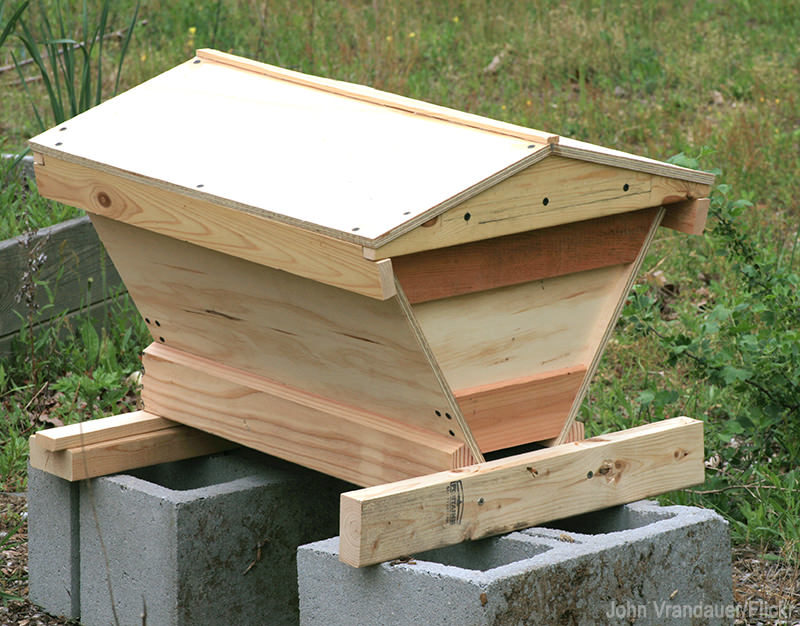
When it comes to beekeeping, every beekeeper does things a little differently. Climate, crops growing in the area and the type of bees you keep will all play a part in how you manage your hive. But as far as the type of hive you choose in the first place, two main options are available to you: the Langstroth hive and the top-bar hive. Before selecting which one will house your bees, you’ll want to assess your abilities, as well as your overarching goals for the hive. Below is a breakdown of some of the main differences between a Langstroth and top-bar hive to help you think through your selection before you purchase bees and equipment.
Langstroth Hives

Langstroth hives are the most common hive used by today’s beekeepers. They’re made of stacked boxes of various depths that have frames inside where the bees make their comb.
Cost:
Starter-kit prices vary upwards from $250 to $350, including a brood box, frames, wax foundation, smoker and gloves. Add to this expense the cost of purchasing bees.
Honey:
Harvesting from a Langstroth hive returns empty comb to the hive, allowing bees to resume use without having to rebuild, so generally beekeepers are able to harvest more honey. For the honey harvest, you’ll need to purchase additional extraction equipment. Many new beekeepers get around this expense by borrowing equipment or participating in club-wide extractions, where equipment is shared by a group in a commercial kitchen.
Other Considerations:
- Because hives are standardized, parts are interchangeable, making it easy to split a hive and buy new or used equipment from a variety of sources.
- A Langstroth super weighs at least 30 to 60 pounds when filled with bees, pollen, honey and brood. A hive inspection requires the beekeeper to lift and entire super off the stack to look into lower level supers. Inspection occurs on a frame-by-frame basis.
- Bees build comb from wax foundation inside a frame provided by the beekeeper. Comb is sturdier and can be easily managed with minimal damage during inspection.
Top-Bar Hives

Top-bar hives are single-story frameless hives that include removable bars, where the bees build their comb. Some beekeepers believe that top-bar hives are a more natural beekeeping method because the bees produce their own comb without foundation. Some speculate that that without wax foundation, comb cell size is more normal and may help bees fight disease and mite infestation—wax foundation may encourage the production of larger cells, opening the hives to these issues.
Cost:
A top-bar hive can be built for less than $100 depending upon the wood purchased or the use of recycled materials. Add to this expense the cost of purchasing bees.
Honey:
A top-bar hive produces less honey on an annual basis than a Langstroth hive. To harvest honey from a top-bar hive, you’ll need to remove the comb and use the crush method. The comb cannot be returned to the bees for further use.
Other Considerations:
- Because top-bar hives are built individually, parts are not interchangeable from beekeeper to beekeeper. Generally, a single beekeeper uses the same pattern over and over for his or her top-bar hives, so in that case, the parts may be transferable from one hive to another.
- It’s necessary to lift only one bar at a time during a top-bar hive inspection, so heavy lifting is significantly reduced compared to a Langstroth hive.
- Some top-bar beekeepers install an observation window on one long side of the hive enabling easier viewing.
No matter which hive type you choose, weigh your options carefully, so you know what to expect when you start on your beekeeping journey.
Learn more about beekeeping on HobbyFarms.com:




